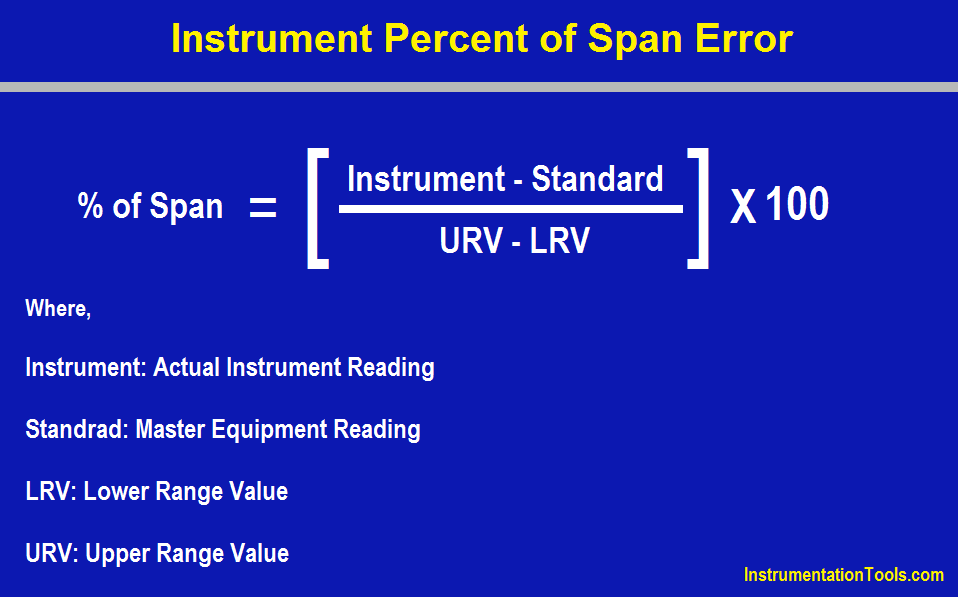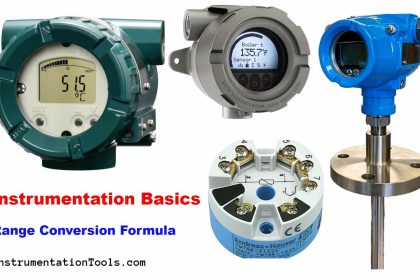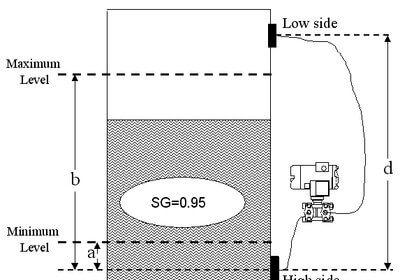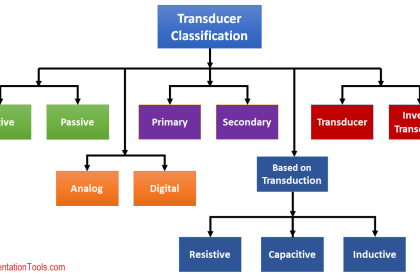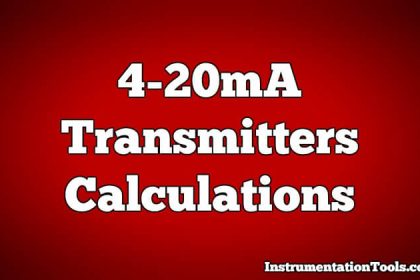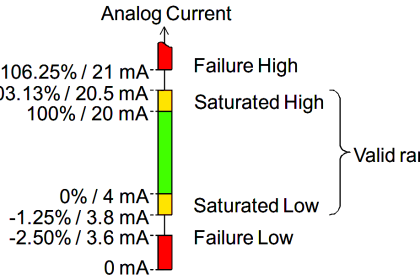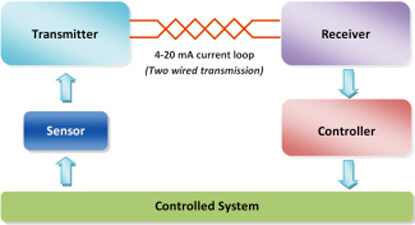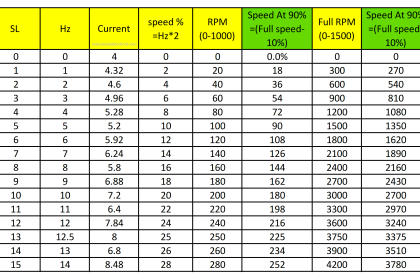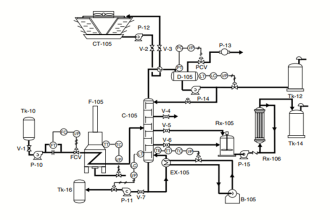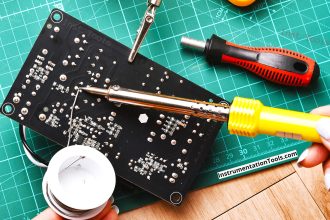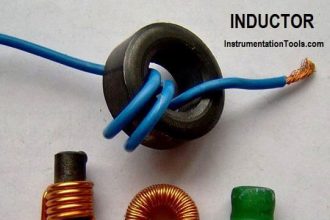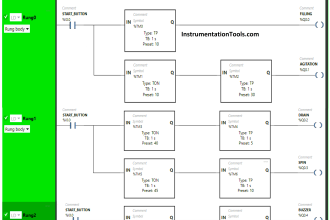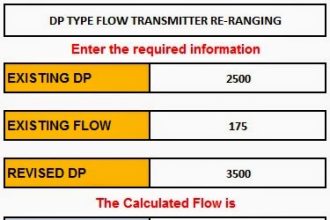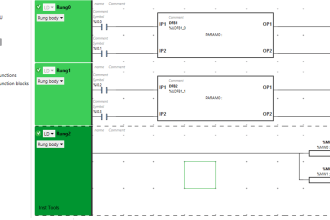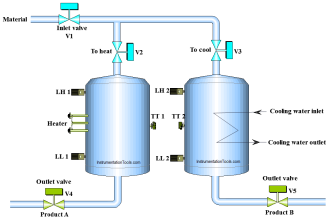An important part of performing instrument calibration is determining the extent of an instrument’s error. Error is usually measured in percent of span.
Instrument Percent of Span Error
Calculate the percent of span error for each of the following examples, and be sure to note the sign of the error (positive or negative):
Question 1:
Calculate the percent of span error for Pressure gauge as per the below details.
LRV = 0 PSI
URV = 100 PSI
Test pressure = 65 PSI
Instrument indication = 67 PSI
Question 2:
Calculate the percent of span error for weigh scale as per the below details.
LRV = 0 pounds
URV = 40,000 pounds
Test weight = 10,000 pounds
Instrument indication = 9,995 pounds
Question 3:
Calculate the percent of span error for thermometer as per the below details.
LRV = -40 o F
URV = 250 o F
Test temperature = 70 o F
Instrument indication = 68 o F
Question 4:
Calculate the percent of span error for Ph analyzer as per the below details.
LRV = 4 pH
URV = 10 pH
Test buffer solution = 7.04 pH
Instrument indication = 7.13 pH
Percent of Span Error Formula
Answer 1
Error = +2 % of span
Answer 2
Error = -0.0125 % of span
Answer 3
Error = -0.69 % of span
Answer 4
Error = +1.5 % of span
Credits: Tony R. Kuphaldt
Read Next:
- Pressure Transmitter Calculations
- Flow Meter Calculations
- Calculate Current 4-20 mA
- Temperature Transmitter Output
- Smart Transmitter Formula
